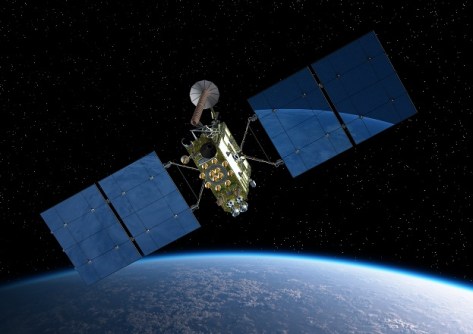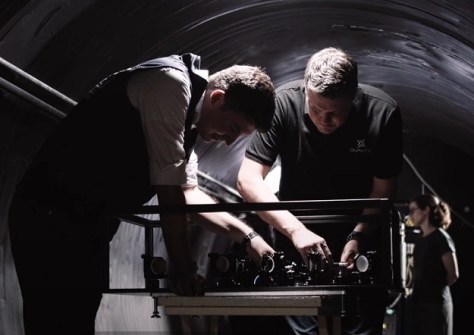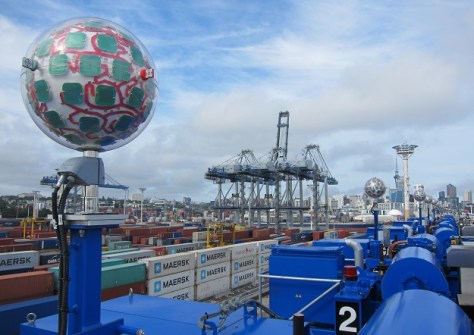
First published on 24 July 2024
By Jonathan Nally
Last week’s global IT outage caused by a routine but errant software update from cybersecurity firm CrowdStrike, has had people questioning the vulnerablility of ICT systems.
One specific technological system that remains a growing source of concern is the global positioning, navigation and timing (PNT) system, which is almost entirely reliant on space-based global navigation satellite systems (GNSS).
The question then is, are space-based PNT systems at risk of having a serious outage caused by a similar errant software update? Could they have their own CrowdStrike moment?
The answer is that, yes, not only could it happen, but it has already happened, and on more than one occasion.
PNT’s CrowdStrike moments
On 1 April 2014, an operator error saw an incorrect ephemeris uploaded to the Russian GLONASS satellite fleet, disrupting systems around the world. In New Zealand for instance, observations from the GeoNet network indicated “that a significant percentage of the 79 GLONASS-enabled receivers experienced total tracking failures during the outage period, which caused real-time streaming outages and data loss”.
While the error was spotted quickly and solved by uploading the correct ephemeris, it still took more than 10 hours for the problem to be completely rectified.
In January 2016, the US had its own CrowdStrike moment when “Errors in the Coordinated Universal Time (UTC) offset parameters broadcast by Global Positioning System (GPS) satellites caused many thousands of GPS-controlled clocks to be in error by approximately -13 µs”. The incorrect timing information — which was broadcast by 15 satellites, or half the available GPS fleet at the time — was caused by an error in a ground software update that happened during the decommissioning of what was then the oldest of the satellites.

Not to be outdone by the Russians and Americans, Europe’s Galileo system had a CrowdStrike moment in July 2019 when, “during a system upgrade, a service incident occurred in the Galileo ground infrastructure. Despite intense recovery efforts, it resulted in a six-day interruption of the Galileo initial navigation and timing services.”
Outages caused by human errors and software glitches are not the only danger. There are also the risks of denials of service via jamming and spoofing, destruction in the event of war, and for a country such as Australia the sovereign risk of being entirely dependent upon overseas systems.
For instance, Australia and New Zealand’s brand new space-based augmentation system (SBAS), SouthPAN, suffered two outages a little over a month apart last year. The disruption inconvenienced many users such as farmers, who were employing the service to engage in precise positioning of harvesting equipment. SouthPAN signals are broadcast by an Inmarsat satellite.
Worse to come?
The failures described above were bad enough in their own ways, but they would pale into insignificance in the face of more serious, widespread or prolonged global outages.
“If you thought CrowdStrike caused chaos, imagine if a GNSS went down. This is a critical and vulnerable capability that every sector worldwide relies upon,” says A/Prof Martin O’Connor, General Manager of Adelaide-based QuantX Labs.
“The global PNT ecosystem is vulnerable and is susceptible to jamming, spoofing and cyber security breaches,” agrees Eldar Rubinov, Positioning and Geodesy Technical Lead at FrontierSI. “Currently, there isn’t a reliable back-up system in place, which means that wide-scale disruptions are possible. Depending on the nature of the event these disruptions could be local, regional or global.”
Several studies have attempted to estimate the economic loss that would be caused by an outage or denial of GPS. One such study, which assumed that all GNSS systems became unserviceable at the same time, found that for the US “the loss of GPS service would have a [US]$1 billion per-day impact. If the outage were to occur during the critical planting season in April and May and lasted multiple weeks, the impacts could be as much as 50% higher because of the widespread adoption of GPS-enabled precision agriculture technologies by American farmers.”
“This underscores the urgent need for resilient backup strategies to be implemented worldwide,” says Rubinov.

Earlier this year, FrontierSI released a report and a white paper that reviewed Australian policies and activities related to the provision of PNT services, finding that “PNT is an essential utility we presently have no control over”.
Calling resilient PNT a “non-negotiable” requirement for safeguarding Australia’s critical infrastructure and economic vitality, the report and white paper outlined measures that would boost resilience:
- Ensuring that building resilient PNT services is not treated as an outcome to enforcement of legislation, but that other methods should be considered to achieve the same level of resilience as other Australian critical infrastructure assets.
- Developing an alternative source of timing, either through space or terrestrial means, that will aid in synchronisation and dissemination across the nation.
- Review and address the nation’s supply chain dependencies on atomic clock technology.
- Undertaking a comprehensive study and appraisal of all vulnerabilities to a loss of GNSS, with recommended mitigations.
The report also says that given the “multifaceted intersection of PNT across various Australian Government agencies and departments, a National PNT Office is necessary to consolidate PNT-related outputs and provide governance of PNT issues for Australia”. The United Kingdom has recently taken this very step, with the planned establishment of a National PNT Office and a National Timing Centre.
Other technologies
One of the solutions to the problem is the development of alternate and resilient PNT systems that can either augment or take over from GNSS, including ground-based systems. Many countries and companies are working on such solutions, including some firms in Australia.
“QuantX Labs are developing solutions to address this exact problem,” says O’Connor. “Terrestrial, compact and portable solutions that will ensure that every asset whether land-, sea- or air-based has access to local timing that will keep their systems synchronised in the event of a GPS outage.”
QuantX has developed expertise in the design of quantum-enabled technologies and has been highly successful in obtaining government grants to further its work. In late 2023, it secured $750,000 from the Department of Defence for a research project aimed at revolutionising a secured PNT capability for defence applications.
The project, called ‘Quantum-Secured Time Transfer for Resilient PNT,’ seeks to employ quantum technology to guarantee the authenticity of received PNT data, thereby making spoofing impossible.

Earlier in 2023, a consortium led by QuantX was awarded a $3.7 million Australian Space Agency Moon to Mars grant to test a next-generation optical atomic clock in orbit. The company says this technology aims to bridge “the gap between large laboratory-based frequency standards and lower precision portable standards. This portability combined with cutting edge stability enables a range of new applications from high-precision terrestrial navigation on mobile platforms to its deployment on MEO and LEO PNT constellations.”
And in early 2024, QuantX secured another Moon to Mars grant to the tune of $532,222 to establish an advanced photonics manufacturing facility to support in-country manufacturing of quantum-capable, miniaturised timing and sensing systems for supporting PNT in space and on Earth.
Time to wake up?
Another Australian firm, Locata, has been supplying ground-based or ‘terrestrial’ precision timing and positioning systems for many years, based on its homegrown proprietary technology. Its customer base includes military, mining, maritime port, aviation and warehousing clients around the world. The company’s CEO, Nunzio Gambale, is not backward in coming forward with his views about the vulnerability of space-based PNT and the need for action.

A major GNSS outage “would be a disaster, an absolutely unmitigated disaster,” he says, highlighting the point that the GNSS would be the first targets in any future major military conflict.
“One month ago I was in Washington, DC, at the Assured PNT Summit. And I came away from there with two feelings. Number one, America is preparing for war. And number two, they are also preparing for a world where there is no GPS,” he says.
Gambale cites estimates that, should a major conflict break out and the GPS be defeated, it could render ineffective perhaps as much as 70% of the US military’s major combat systems. And so, it’s no wonder the US is seeking alternatives.
“They’re working on quantum. They’re working on gravitational systems. They can track stars in daylight. And they’re not doing it just for fun,” he says. “The point is, the military will have a solution, but we won’t. And that should scare everyone because the CrowdStrike problem was child’s play compared to what could happen to GPS.”

“And this is something that I’ve been trying to say to authorities in Australia,” he added. “Australia should wake up, because one of the solutions to this problem, Locata, is here, and it has been developed completely in Australia.”
“We’ve spent 25 years developing this ‘impossible’ technology because we’ve been aware of the problem for decades, yet we have been ignored by the majority of the industry. Why? Because the space-based community has the megaphone and we’re drowned out in the noise.”
Gambale draws a comparison between PNT vulnerability and aircraft safety.
“There was something like 85 or 90 hijackings of aircraft before 9/11, but nobody put impenetrable doors on the cockpit until after 9/11,” he says. “It takes a disaster for people to wake up, but by then it’s way too late.”







